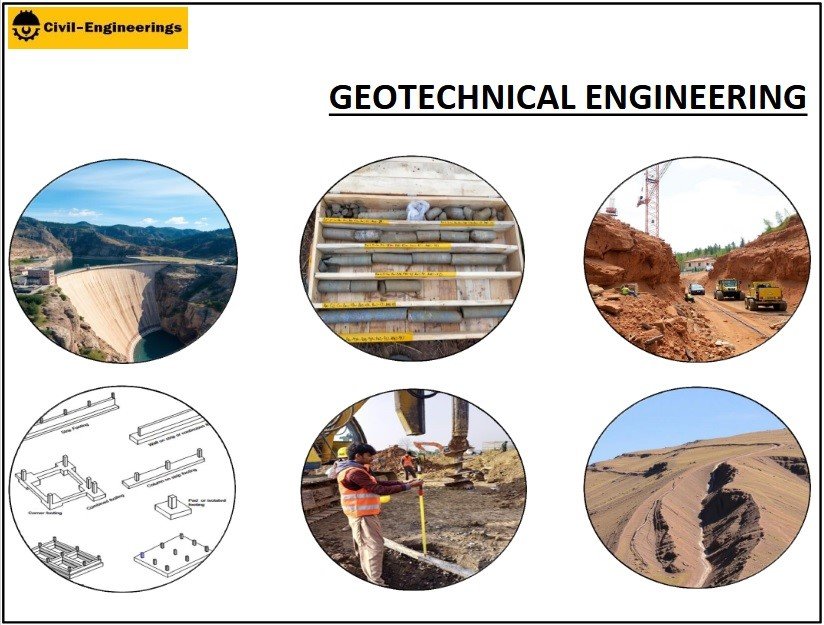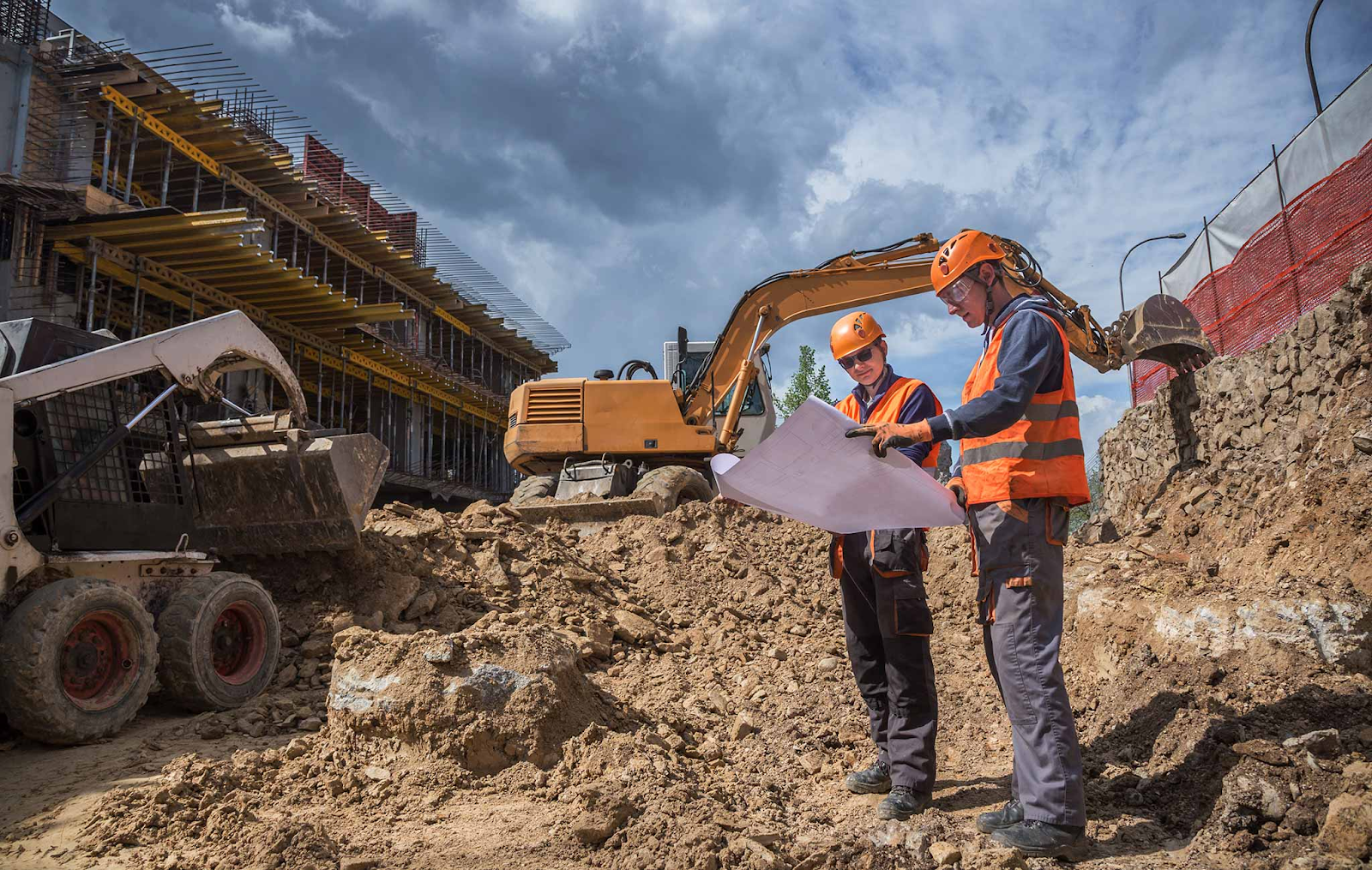The Geotechnical Engineering For Construction Projects Ideas
Some Known Incorrect Statements About Geotechnical Engineering For Construction Projects
Table of ContentsSome Ideas on Geotechnical Engineering For Construction Projects You Should KnowSome Known Incorrect Statements About Geotechnical Engineering For Construction Projects Get This Report on Geotechnical Engineering For Construction ProjectsSome Known Details About Geotechnical Engineering For Construction Projects 7 Simple Techniques For Geotechnical Engineering For Construction ProjectsFascination About Geotechnical Engineering For Construction Projects
These functions need to be analyzed by geotechnical designers to anticipate their movements under various scenarios., making this evaluation necessary.A geotechnical engineer will certainly analyze soil to establish the bearing capacity of the planet and suggest correct structure kinds, such as shallow foundations, deep structures like heaps, or specialized options like floating foundations for soft dirts. Understanding the attributes and activities of soil and rock, along with just how they interact with buildings that have actually been put up on or within them, is among the main explanations for why geotechnical engineering is necessary.
In enhancement to architectural preparation and building, geotechnical engineering is additionally essential to the reconstruction and upkeep of pre-existing structures. Age-related deterioration or extra troubles can affect a framework's stability and performance. Environmental management is completed with geotechnical engineering. Experience in air, water, and dirt top quality maintenance is used by geotechnical designers to decrease the adverse effects of tasks.
Facilities growth, offshore design, tunnel building and construction, and deep foundations. Risk-based style and multidisciplinary teams. These components will certainly maintain the area developing and guarantee its ongoing value in the years to come. To sum up, geotechnical engineering is an important discipline that protects the durability and stability of civil facilities. Geotechnical engineers contribute to making structure projects reliable throughout the globe by understanding the behaviour of earth products and applying ideal preparation approaches.
The 25-Second Trick For Geotechnical Engineering For Construction Projects
By checking out soil, rock, and subsurface conditions, geotechnical engineers give crucial understandings that aid in the style, building and construction, and maintenance of structures and infrastructure.

Geotechnical Engineering For Construction Projects for Dummies
Laboratory testing: Identifying the homes of dirt and rock. Several top-level building and construction tasks have actually successfully utilized geotechnical design to guarantee their security and safety.

As a leader in geotechnical engineering, BECC Inc. is dedicated to supplying innovative and reliable services that fulfill the greatest criteria of quality and safety., a mechanical designer and rock hound.
The Single Strategy To Use For Geotechnical Engineering For Construction Projects
Terzaghi additionally established the framework for theories of bearing capacity of foundations, and the theory for forecast of the rate of settlement of clay layers because of consolidation. Later on, Maurice Biot fully established the three-dimensional soil debt consolidation concept, prolonging the one-dimensional model previously established by Terzaghi to a lot more general theories and presenting the set of fundamental equations of Poroelasticity.
Geotechnical designers explore and determine the homes of subsurface conditions and materials. They likewise create equivalent earthworks and maintaining frameworks, passages, and framework structures, and might supervise and evaluate sites, which might better include website tracking in addition to the risk evaluation and mitigation of natural risks - Geotechnical Engineering for Construction Projects. Geotechnical engineers and design geologists perform geotechnical examinations to get information on the physical residential properties of dirt and rock hidden and beside a website to create earthworks and foundations for recommended structures and for the fixing of important link distress to earthworks and frameworks brought on by subsurface problems.
A Biased View of Geotechnical Engineering For Construction Projects
Geologic mapping and analysis of geomorphology are generally finished in examination with a geologist or design rock hound. Subsurface exploration normally entails in-situ screening (for example, the typical penetration test and cone penetration test). The digging of examination pits and trenching (specifically for finding faults and slide planes) might also be made use of to find out about soil problems at deepness. Still, they are occasionally used to allow a geologist or engineer to be lowered right into the borehole for direct aesthetic and hands-on assessment of the dirt and rock stratigraphy. Numerous dirt samplers exist to satisfy the requirements of different engineering projects. The typical penetration test, which uses a thick-walled split spoon sampler, is the most usual way to collect disturbed samples.

Usually, the user interface's precise geometry is unidentified, and a streamlined interface geometry is presumed. Finite inclines require three-dimensional models to be evaluated, so most slopes are evaluated assuming that they are definitely broad and can be represented by two-dimensional versions.
Not known Incorrect Statements About Geotechnical Engineering For Construction Projects
The empirical approach might be referred to as follows: General expedition adequate to establish the rough nature, pattern, and properties of deposits. Analysis of the most potential conditions and the most negative conceivable variances. Developing the design based on a working theory of actions prepared for under one of the most probable More hints conditions. Option of quantities to be observed as building and construction proceeds and computing their visit this website prepared for worths based upon the working hypothesis under the most unfavorable conditions.
Measurement of quantities and assessment of real problems. Layout alteration per real conditions The observational method is appropriate for building and construction that has already begun when an unexpected development happens or when a failure or accident looms or has actually currently occurred. It disagrees for projects whose design can not be changed during construction.